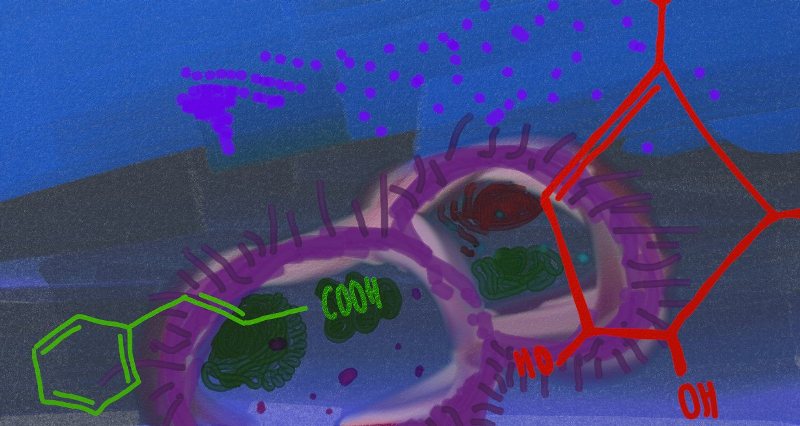Team:Alberta-North-RBI E/Waiting4Pizza
From 2012e.igem.org
(→Concept Art) |
(→Case study: Generic Oseltamivir) |
||
| Line 104: | Line 104: | ||
== Case study: Generic Oseltamivir == | == Case study: Generic Oseltamivir == | ||
| - | Oseltamivir, an anti-viral drug better known under the brand-name Tamiflu, was invented by Gilead Sciences and subsequently licensed to F. Hoffman La Roche Ltd. Since the 1999 launch of Tamiflu sales, over 33 million patients have been treated world-wide. A significant number of additional sales are due to stockpiling by governments around the world in preparation for an influenza pandemic. It is estimated that | + | Oseltamivir, an anti-viral drug better known under the brand-name Tamiflu, was invented by Gilead Sciences and subsequently licensed to F. Hoffman La Roche Ltd. Since the 1999 launch of Tamiflu sales, over 33 million patients have been treated world-wide. A significant number of additional sales are due to stockpiling by governments around the world in preparation for an influenza pandemic. It is estimated that in 2006 Roche's production capacity will have reached 300 million doses per year. Oseltamivir is a compound for which there will continue to be a high demand. |
Shikimic acid, the starting material used to produce oseltamivir, is traditionally sourced from pods of the star anise plant, which grow only in the mountainous regions of China's southern provinces. Third-party suppliers, who work in close collaboration with Roche, are responsible for harvest and purification. Shikimic acid can also be produced by fermentation – a patented process licensed by Roche through which they eventually intend to produce a majority of their shikimic acid. As a result of Roche's two sourcing strategies, shikimic acid is not readily available to other drug manufacturers. | Shikimic acid, the starting material used to produce oseltamivir, is traditionally sourced from pods of the star anise plant, which grow only in the mountainous regions of China's southern provinces. Third-party suppliers, who work in close collaboration with Roche, are responsible for harvest and purification. Shikimic acid can also be produced by fermentation – a patented process licensed by Roche through which they eventually intend to produce a majority of their shikimic acid. As a result of Roche's two sourcing strategies, shikimic acid is not readily available to other drug manufacturers. | ||
Revision as of 20:43, 13 October 2012

Contents |
The Problem/Opportunity
|
Due to environmental concern, government regulations and economic considerations, there has been a consistent increased effort in recycling endeavours over the past years. Several hundred million metric tons of municipal solid waste is disposed of in Canada and the United States annually. Paper products alone account for approximately 45% of municipal solid waste by weight before recycling (N. Lark et al.). As a result, recycling paper products not only affects the upstream processes in paper production (where raw materials are acquired), but also has consequences on the downstream portion of paper use (waste-disposal).
Our SolutionAs technologies continue to improve, there has been increasing interest in exploring the use of biomass as a renewable resource. Biomass is typically a by-product of an industrial process and considered waste. In particular, the paper sludge produced by paper recycling plants is presently disposed of via landfill or burnt. This is a significant source of potentially exploitable cellulose that can not only be used to produce high-value chemicals but will also have a positive impact on waste management. Additionally, paper sludge is an attractive feedstock compared to other lignocellulosic biomass because is processed prior to its utilization and requires no pre-treatment as a result.
The Competitive LandscapeShikimic acid is a vital precursor to and major bottleneck in the production of the anti-influenza drug Tamiflu. Taking into account the recent H1N1 and H5N1 influenza outbreaks and reports of shikimic acid shortages in 2005, demand for the chemical seems likely to increase should another pandemic scare occur. Currently, pharmaceuticals giant Roche produces the majority of the world's supply of shikimic acid, holding an effective monopoly on the market. Their method of extraction involves isolating the compound from Chinese star anise, at a yield of approximately 30g of seed to very 1g of shikimate[cite]. Furthermore, as demonstrated by the Tamiflu shortages announced by Roche in 2005, a bad harvest will lead inevitably lead to mass shortages in the drug supply.
Our Competitive AdvantageUpcycled Aromatics’ competitive advantage lie in our flexible process, our choice of feedstock, and our tight integration between process and genetics.
The G-Map
View Larger Map Countdown
Concept Art
Case study: Generic OseltamivirOseltamivir, an anti-viral drug better known under the brand-name Tamiflu, was invented by Gilead Sciences and subsequently licensed to F. Hoffman La Roche Ltd. Since the 1999 launch of Tamiflu sales, over 33 million patients have been treated world-wide. A significant number of additional sales are due to stockpiling by governments around the world in preparation for an influenza pandemic. It is estimated that in 2006 Roche's production capacity will have reached 300 million doses per year. Oseltamivir is a compound for which there will continue to be a high demand. Shikimic acid, the starting material used to produce oseltamivir, is traditionally sourced from pods of the star anise plant, which grow only in the mountainous regions of China's southern provinces. Third-party suppliers, who work in close collaboration with Roche, are responsible for harvest and purification. Shikimic acid can also be produced by fermentation – a patented process licensed by Roche through which they eventually intend to produce a majority of their shikimic acid. As a result of Roche's two sourcing strategies, shikimic acid is not readily available to other drug manufacturers. US and Canadian (?) patent protection for oseltamivir expires in 2016. It is generally accepted that in Canada generic drugs will very quickly capture approximately 80% of the market due to the “forced subsitution” required by drug insurance plans. However, generic manufacturers will be unable to produce a generic equivalent to Tamiflu if they cannot obtain shikimic acid. As a licensee of the same fermentation technology used by Roche to produce shikimic acid, Upcycled Aromatics would be ideally positioned as an alternate supplier of high quality shikimic acid. Agreements established with generic drug manufactures would allow us to capture a share of the lucrative shikimic acid market while reducing or eliminating the associated uncertainty. Flickr badge
www.flickr.com
This is a Flickr badge showing public photos and videos from Upcycled Aromatics. Make your own badge here.
Business model |
 "
"







